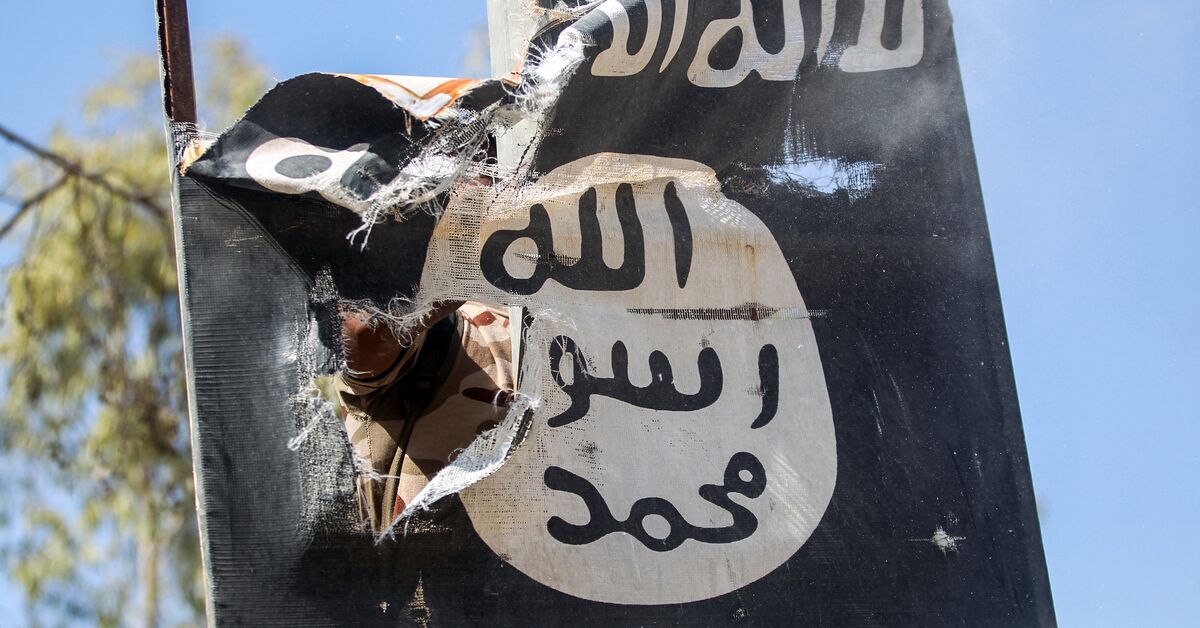Muslims have contributed vastly to world civilization but remain obscure
By Edwin Ali
The Encyclopedia Britannica is one of a few sources for Detailing some of the important contributions which Muslim scholars have made in the advancement of knowledge the world over.
The contributions in the advancement of knowledge by the traditional Islamic institutions of learning (Madrasahs, Maktab, Halqa & Dar-ul-Aloom) are enormous but are generally unrecognized and appreciated.
Muslim scholars calculated the angle of the ecliptic; measured the size of the Earth; calculated the precession of the equinoxes; explained, in the field of optics and physics, such phenomena as refraction of light, gravity, capillary attraction, and twilight; and developed observatories for the empirical study of heavenly bodies.
There is empirical evidence that they made advances in the uses of drugs, herbs, and foods for medication; established hospitals with a system of interns and externs; discovered causes of certain diseases and developed correct diagnoses of them; proposed new concepts of hygiene; made use of anesthetics in surgery with newly innovated surgical tools; and introduced the science of dissection in anatomy.
There can be no denying the fact that Muslims furthered the scientific breeding of horses and cattle; found new ways of grafting to produce new types of flowers and fruits; introduced new concepts of irrigation, fertilization, and soil cultivation; and improved upon the science of navigation. In the area of chemistry, Muslim scholarship led to the discovery of such substances as potash, alcohol, nitrate of silver, nitric acid, sulfuric acid, and mercury chloride.
Of course there is a pletoria of evidence that Muslims scientists also developed to a high degree of perfection the arts of textiles, ceramics, and metallurgy.” According to a US study published by the American Association for the Advancement of Science in its Journal on 21 February 2007; ‘Designs on surface tiles in the Islamic world during the Middle Ages revealed their maker’s understanding of mathematical concepts not grasped in the West until 500 years later. Many Medieval Islamic buildings walls have ornate geometric star and polygon or ‘girih’, patterns, which are often overlaid with a swirling network of lines – This girih tile method was more efficient and precise than the previous approach, allowing for an important breakthrough in Islamic mathematics and design.’
Muslims Scholars of Theology and Science:
According to the famous scientist Albert Einstein; “Science without religion is lame. Religion without science is blind.” Francis Bacon, the famous philosopher, has rightly said that a little knowledge of science makes you an atheist, but an in-depth study of science makes you a believer in God.
A critical analysis reveals that most of Muslim scientists and scholars of medieval period were also eminent scholars of Islam and theology. The earlier Muslim scientific investigations were based on the inherent link between the physical and the spiritual spheres, but they were informed by a process of careful observation and reflection that investigated the physical universe.
Influence of Qur’an on Muslims Scientists:
The worldview of the Muslims scientists was inspired by the Qur’an and they knew that: “Surely, In the creation of the heavens and the earth; in the alternation of the night and the day, in the sailing of the ships through the ocean for the profit of mankind; in the rain which Allah sends down from the skies, with which He revives the earth after its death and spreads in it all kinds of animals, in the change of the winds and the clouds between the sky and the earth that are made subservient, there are signs for rational people.”(Qur’an;2:164). “Indeed in the alternation of the night and the day and what Allah has created in the heavens and the earth, there are signs for those who are God fearing.”(Qur’an;10:6). They were aware that there was much more to be discovered. They did not have the precise details of the solar and lunar orbits but they knew that there was something extremely meaningful behind the alternation of the day and the night and in the precise movements of the sun and the moon as mentioned in Qur’an: One can still verify that those who designed the dome and the minaret, knew how to transform space and silence into a chanting remembrance that renews the nexus between God and those who respond to His urgent invitation.
Famous Muslim Scientists and Scholars:
The traditional Islamic institutions of learning produced numerous great theologians, philosophers, scholars and scientists. Their contributions in various fields of knowledge indicate the level of scholarship base developed among he Muslims one thousand years ago.
Only few are being mentioned here:
Chemistry:
Jabir ibn Hayyan, Abu Musa (721-815), alchemist known as the “father of chemistry.” He studied most branches of learning, including medicine. After the ‘Abbasids defeated the Umayyads, Jabir became a court physician to the ‘Abbasid caliph Harun ar-Rashid. Jabir was a close friend of the sixth Shi’ite imam, Ja’far ibn Muhammad, whom he gave credit for many of his scientific ideas.
Mathematics, Algebra, Astronomy & Geography:
Al-Khwarizmi (Algorizm) (770–840 C.E) was a researcher of mathematics, algorithm, algebra, calculus, astronomy & geography. He compiled astronomical tables, introduced Indian numerals (which became Arabic numerals), formulated the oldest known trigonometric tables, and prepared a geographic encyclopaedia in cooperation with 69 other scholars.
Physics, Philosophy, Medicine:
Ibn Ishaq Al-Kindi (Alkindus) (800–873 C.E) was an intellectual of philosophy, physics, optics, medicine, mathematics & metallurgy. Ali Ibn Rabban Al-Tabari(838–870 C.E) was a scholar in medicine, mathematics, calligraphy & literature. Al-Razi (Rhazes) (864– 930 C.E), a physical and scientist of medicine, ophthalmology, smallpox, chemistry & astronomy.
Ar-Razi’s two most significant medical works are the Kitab al-Mansuri, which became well known in the West in Gerard of Cremona’s 12th-century Latin translation; and ‘Kitab al-hawi’, the “Comprehensive Book”. Among his numerous minor medical treatises is the famed Treatise on the Small Pox and Measles, which was translated into Latin, Byzantine Greek, and various modern languages.
Al-Farabi (Al-Pharabius) (870- 950 C.E) excelled in sociology, logic, philosophy, political science & music. Abu Al-Qasim Al-Zahravi (Albucasis; 936 -1013 C.E) was an expert in surgery & medicine known as the father of modern surgery.
Ibn Al-Haitham (Alhazen) (965-1040 C.E); was the mathematician and physicist who made the first significant contributions to optical theory since the time of Ptolemy (flourished 2nd century). In his treatise on optics, translated into Latin in 1270 as Opticae thesaurus Alhazeni libri vii, Alhazen published theories on refraction, reflection, binocular vision, focusing with lenses, the rainbow, parabolic and spherical mirrors, spherical aberration, atmospheric refraction, and the apparent increase in size of planetary bodies near the Earth’s horizon. He was first to give an accurate account of vision, correctly stating that light comes from the object seen to the eye.
Evidene of Muslim schientist is there the whole world to ee and learn but as usual such vital contributions are swept under the rug. Abu Raihan Al-Biruni (973-1048 C.E); was a Persian scholar and scientist, one of the most learned men of his age and an outstanding intellectual figure. Al-Biruni’s most famous works are Athar al-baqiyah (Chronology of Ancient Nations); at-Tafhim (“Elements of Astrology”); al-Qanun al-Mas’udi (“The Mas’udi Canon”), a major work on astronomy, which he dedicated to Sultan Mas’ud of Ghazna; Ta’rikh al-Hind (“A History of India”); and Kitab as-Saydalah, a treatise on drugs used in medicine. In his works on astronomy, he discussed with approval the theory of the Earth’s rotation on its axis and made accurate calculations of latitude and longitude. He was the first one to determine the circumference earth. In the filed of physics, he explained natural springs by the laws of hydrostatics and determined with remarkable accuracy the specific weight of 18 precious stones and metals. In his works on geography, he advanced the daring view that the valley of the Indus had once been a sea basin.
Ibn Sina (Avicenna, 981–1037 C.E); was a scientist of medicine, philosophy, mathematics & astronomy. He was particularly noted for his contributions in the fields of Aristotelian philosophy and medicine. He composed the Kitab ash-shifa` (“Book of Healing”), a vast philosophical and scientific encyclopedia, and the Canon of Medicine, which is among the most famous books in the history of medicine.
Ibn Hazm, (994-1064 C.E) was a Muslim litterateur, historian, jurist, and theologian of Islamic Spain. One of the leading exponents of the Zahiri (literalist) school of jurisprudence, he produced some 400 works, covering jurisprudence, logic, history, ethics, comparative religion, and theology, and The Ring of the Dove, on the art of love.
Al-Zarqali (Arzachel) (1028-1087 C.E); an astronomer who invented astrolabe (an instrument used to make astronomical measurements). Al-Ghazali (Algazel) (1058-1111 C.E); was a scholar of sociology, theology & philosophy.
Ibn Zuhr (Avenzoar) (1091-1161 C.E); was a scientist and expert in surgery & medicine.
Ibn Rushd (Averroes) (1128- 1198 C.E); excelled in philosophy, law, medicine, astronomy & theology.
Nasir Al-Din Al-Tusi (1201-1274 C.E); was the scholar of astronomy and Non-Euclidean geometry.
Geber (flourished in 14th century Spain) is author of several books that were among the most influential works on alchemy and metallurgy during the 14th and 15th centuries. A number of Arabic scientific works credited to Jabir were translated into Latin during the 11th to 13th centuries. Thus, when an author who was probably a practicing Spanish alchemist began to write in about 1310. Four works by Geber are known: Summa perfectionis magisterii (The Sum of Perfection or the Perfect Magistery, 1678), Liber fornacum (Book of Furnaces, 1678), De investigatione perfectionis (The Investigation of Perfection, 1678), and De inventione veritatis (The Invention of Verity, 1678).
They are the clearest expression of alchemical theory and the most important set of laboratory directions to appear before the 16th century. Accordingly, they were widely read and extremely influential in a field where mysticism, secrecy, and obscurity were the usual rule. Geber’s rational approach, however, did much to give alchemy a firm and respectable position in Europe. His practical directions for laboratory procedures were so clear that it is obvious he was familiar with many chemical operations. He described the purification of chemical compounds, the preparation of acids (such as nitric and sulfuric), and the construction and use of laboratory apparatus, especially furnaces. Geber’s works on chemistry were not equaled in their field until the 16th century with the appearance of the writings of the Italian chemist Vannoccio Biringuccio, the German mineralogist Georgius Agricola, and the German alchemist Lazarus Ercker.
Muhammad Ibn Abdullah (Ibn Battuta) (1304-1369 C.E); was a world traveler, he traveled 75,000 mile voyage from Morocco to China and back. Ibn Khaldun(1332-1395 C.E) was an expert on sociology, philosophy of history and political science.
Tipu, Sultan of Mysore (1783-1799 C.E) in the south of India, was the innovator of the world’s first war rocket. Two of his rockets, captured by the British at Srirangapatana, are displayed in the Woolwich Museum of Artillery in London. The rocket motor casing was made of steel with multiple nozzles. The rocket, 50mm in diameter and 250mm long, had a range performance of 900 meters to 1.5 km.
Turkish scientist Hazarfen Ahmet Celebi took off from Galata tower and flew over the Bosphorus, two hundred years before a comparable development elsewhere. Fifty years later Logari Hasan Celebi, another member of the Celebi family, sent the first manned rocket into upper atmosphere, using 150 okka (about 300 pounds) of gunpowder as the firing fuel.
Contribution of Great Muslim Women & Scholars:
It is very important to note that Islam does not restrict acquisition of knowledge to men only, the women are equally required to gain knowledge. Hence many eminent women have contributed in different fields. Aishah as-Siddiqah (the one who affirms the Truth), the favourite wife of Propeht Muhammad (peace be upon him), is regarded as the best woman in Islam. Her life also substantiates that a woman can be a scholar, exert influence over men and women and provide them with inspiration and leadership. Her life is also an evidence of the fact that the same woman can be totally feminine and be a source of pleasure, joy and comfort to her husband. The example of Aishah in promoting education and in particular the education of Muslim women in the laws and teachings of Islam is one which needs to be followed. She is source of numerous Hadith and has been teaching eminent scholars. Because of the strength of her personality, she was a leader in every field in knowledge, in society and in politics.
Sukayna (also “Sakina), the great granddaughter of the Prophet (peace be upon him), and daughter of Imam Husain was the most brilliant most accomplished and virtuous women of her time. She grew up to be an outspoken critic of the Umayyads. She became a political activist, speaking against all kinds of tyranny and personal, social and political iniquities and injustice. She was a fiercely independent woman. She married more than once, and each time she stipulated assurance of her personal autonomy, and the condition of monogamy on the prospective husband’s part, in the marriage contract. She went about her business freely, attended and addressed meetings, received men of letters, thinkers, and other notables at her home, and debated issues with them. She was an exceedingly well-educated woman who would take no nonsense from anyone howsoever high and mighty he or she might be.
Um Adhah al-Adawiyyah (d. 83 AH), reputable scholar and narrator of Hadith based on reports of Ali ibn Abu Talib and Ayesha; Amrah bint Abd al-Rahman (d. 98 AH), one of the more prominent students of Ayesha and a known legal scholar in Madina whose opinions overrode those of other jurists of the time; Hafsa bint Sirin al-Ansariyyah (d. approx. 100 AH), also a legal scholar. Amah al-Wahid (d. 377 AH), noted jurist of the Shafaii school and a mufti in Baghdad; Karimah bint Ahmad al-Marwaziyyah (d. 463 AH), teacher of hadith (Sahih Bukhari); Zainab bint Abd al-Rahman (d. 615 AH), linguist and teacher of languages in Khorasan. Zainab bint Makki (d. 688 AH) was a prominent scholar in Damascus, teacher of Ibn Taimiya, the famous jurist of the Hanbali school; Zaynab bint Umar bin Kindi (d. 699 AH), teacher of the famous hadith scholar, al-Mizzi; Fatima bint Abbas (d. 714 AH), legal scholar of the Hanbali school, mufti in Damascus and later in Cairo; Nafisin bint al Hasan taught hadith; Imam Shafaii sat in her teaching circle at the height of his fame in Egypt. Two Muslim women — Umm Isa bint Ibrahim and Amat al-Wahid — served as muftis in Baghdad. Ayesha al-Banniyyah, a legal scholar in Damascus, wrote several books on Islamic law. Umm al-Banin (d. 848 AH/ 1427 CE) served as a mufti in Morocco. Al Aliyya was a famous teacher whose classes men attended before the noon prayer (Zuhr) and women after the afternoon prayer (Asr). A Muslim woman of the name of Rusa wrote a textbook on medicine, and another, Ujliyyah bint al-Ijli (d. 944 CE) made instruments to be used by astronomers.
During the Mamluk period in Cairo (11th century) women established five universities and 12 schools which women managed.
Rabi’a al-Adawiyya al-Basri (717 C.E), is honored as one of the earliest and greatest sufis in Islam. Orphaned as a child, she was captured and sold into slavery. But later her master let her go. She retreated into the desert and gave herself to a life of worship and contemplation. She did not marry, and to a man who wanted her hand she said: “I have become naught to self and exist only through Him. I belong wholly to Him. You must ask my hand of Him, not of me.” She preached unselfish love of God, meaning that one must love Him for His own sake and not out of fear or hope of rewards. She had many disciples, both men and women.
Zubaida (Amatal Aziz bint Jafar), the favourite wife of Harun al-Rashid, the legendary Abassid caliph. She came to be an exceedingly wealthy woman, a billionaire so to speak, independently of her husband. Granddaughter of Al-Mansur, she grew up to be a lady of dazzling beauty, articulate and charming of speech, and great courage. Discerning and sharp, her wisdom and insightfulness inspired immediate admiration and respect. In her middle years she moved out of the royal “harem” and began living in a huge palace of her own. She owned properties all over the empire which dozens of agents in her employ managed for her. A cultivated woman, pious and well acquainted with the scriptures, Zubaida was also a poetess and a patron of the arts and sciences. She allocated funds to invite hundreds of men of letters, scientists, and thinkers from all over the empire to locate and work in Baghdad.
She spent much of her funds for public purposes, built roads and bridges, including a 900-mile stretch from Kufa to Makkah, and set up, hostels, eating places, and repair shops along the way, all of which facilitated travel and encouraged enterprise. She built canals for both irrigation and water supply to the people. She spent many millions of Dinars on getting a canal built, that went through miles of tunnel through mountains, to increase the water supply in Makkah for the benefit of pilgrimages. She took a keen interest in the empire’s politics and administration. The caliph himself sought her counsel concerning the affairs of state on many occasions and found her advice to be eminently sound and sensible. After Harun’s death, his successor, Al Mamun, also sought her advice from time to time. She died in 841 C.E (32 years after Harun’s death).
Arwa bint Ahmad bin Mohammad al-Sulayhi (born 1048 C.E) was the ruling queen of Yemen for 70 years (1067-1138 C.E), briefly, and that only technically, as a co-ruler with her two husbands, but as the sole ruler for most of that time. She is still remembered with a great deal of affection in Yemen as a marvellous queen. Her name was mentioned in the Friday sermons right after that of the Fatimid caliph in Cairo. She built mosques and schools throughout her realm, improved roads, took interest in agriculture and encouraged her country’s economic growth. Arwa is said to have been an extremely beautiful woman, learned, and cultured. She had a great memory for poems, stories, and accounts of historical events. She had good knowledge of the Qur’an and Sunnah. She was brave, highly intelligent, devout, with a mind of her own. She was a Shi’a of the Ismaili persuasion, sent preachers to India, who founded an Ismaili community in Gujarat which still thrives. She was also a competent military strategist. At one point (1119 C.E) the Fatimid caliph sent a general, Najib ad-Dowla, to take over Yemen. Supported by the emirs and her people, she fought back and forced him to go back to Egypt. She died in 1138 C.E at the age of 90. A university in Sana’a is named after her, and her mausoleum in Jibla continues to be a place of pilgrimage for Yemenis and others. The other eminent ladies who played important role in the affairs of state and philanthropy include, Buran the wife of Caliph Mamun. Among the Mughals Noor Jehan, Zaib un Nisa left their mark in Indian history. Razia Sultan was an other eminent women ruler in India.
Influence of Islamic Learning in Reviving Western Civilization:
While Muslims were excelling in the field of knowledge and learning of science and technology, the conditions of Christendom at this period was deplorable. Under Constantine and his orthodox successors the Aesclepions were closed for ever, the public libraries established by liberality of the pagan emperors were dispersed or destroyed. Learning was branded as magic and punished as treason, philosophy and science were exterminated. The ecclesiastical hatred against human learning had found expression in the patristic maxims; “Ignorance is the mother of devotion” and Pope Gregory the Great the founder of the doctrine of ‘supremacy of religious authority’; gave effect to this obscurantist dogma by expelling from Rome all scientific studies and burning the Palatine Library founded by Augustus Caesar.
He forbade the study of ancient writers of Greece and Rome. He introduced and sanctified the mythological Christianity which continued for centuries as the predominating creed of Europe with its worship of relics and the remains of saints. Science and literature were placed under the ban by orthodox Christianity and they succeeded in emancipating themselves only when Free Thought had broken down the barriers raised by orthodoxy against the progress of the human mind.
Phenomenal influence of Islamic learning on the West:
The influence of Islamic learning on the West has been phenomenal; an extract from
Encyclopedia Britannica is an eye opener for the Muslims:
“The decline of Muslim scholarship coincided with the early phases of the European intellectual awakening that these translations were partly instrumental in bringing about. The translation into Latin of most Islamic works during the 12th and 13th centuries had a great impact upon the European Renaissance. As Islam was declining in scholarship and Europe was absorbing the fruits of Islam’s centuries of creative productivity, signs of Latin Christian awakening were evident throughout the European continent. The 12th century was one of intensified traffic of Muslim learning into the Western world through many hundreds of translations of Muslim works, which helped Europe seize the initiative from Islam when political conditions in Islam brought about a decline in Muslim scholarship. By 1300 C.E when all that was worthwhile in Muslim scientific, philosophical, and social learning had been transmitted to European schoolmen through Latin translations, European scholars stood once again on the solid ground of Hellenistic thought, enriched or modified through Muslim and Byzantine efforts.”
“Most of the important Greek scientific texts were preserved in Arabic translations. Although the Muslims did not alter the foundations of Greek science, they made several important contributions within its general framework. When interest in Greek learning revived in western Europe during the 12th and 13th centuries, scholars turned to Islamic Spain for the scientific texts. A spate of translations resulted in the revival of Greek science in the West and coincided with the rise of the universities. Working within a predominantly Greek framework, scientists of the late Middle Ages reached high levels of sophistication and prepared the ground for the scientific revolution of the 16th and 17th centuries.” According to Will Durant, the Western scholar, “For five centuries , from 700 to 1200 (C.E), Islam led the world in power, order and extent of government, in refinement of manners, scholarship and philosophy”.
These are a few examples of the contributions which Muslim scholars have made to the world and it is to be hoped that this will be recognized and appreciated.








